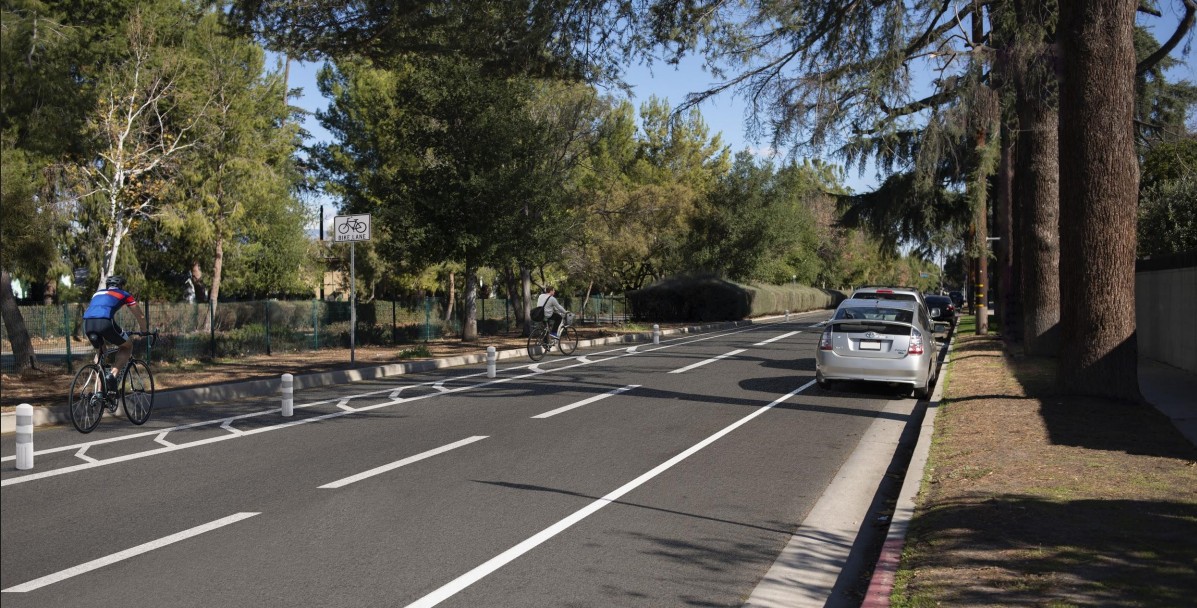The UCLA Institute of Transportation Studies is hosting TransportationCamp LA 2024 on Saturday, June 8. Transportation Camp will bring together around 150 people interested in transportation to discuss whatever they decide to based on their interests and experiences. There is no set agenda prior to the event. Rather, sessions are determined at the beginning of the day and are drawn from proposals and ideas that attendees submit.
I’ve outlined some of the ideas I’m thinking about below. You can learn more and register to join the conversations.
LA 28’s Transportation Legacy
Los Angeles will be hosting the Olympic and Paralympic Games in the Summer of 2028. Just as significantly (to me and to me only), this October UCLA ITS will host the 2024 UCLA Arrowhead Symposium on Mega Events: Major Opportunities. I am putting a lot of thought into legacies for transportation, public space, community and culture while planning this year’s Symposium program.
Efforts are underway to expand a fledgling regional network of bus-only lanes. But there are so many more opportunities to connect more communities with active transportation paths, convert underutilized road space to community plazas, and build towards lasting change in how people get around L.A.
Metro’s Co-Dependency with Cubic Transportation Systems, Inc.
Contactless payment, particularly the EMV contactless standard has made tap-to-pay commonplace in the economy. Metro staff are seeking to make the 176th modification to Contract OP0246101001, issued during the first George W. Bush administration, to allow TAP fare validators to accept contactless payment cards and smartphone wallets.
The move to open loop payment seems like a step in the right direction, but a major, no-bid modification to a 24-year old contract is problematic on its surface. Digging in deeper only yields more questions: why did Metro staff wait until it was almost too late to implement contactless payments before the 2026 World Cup? Why isn’t there a pathway for the other 26 agencies to choose their own pathway to open payments using statewide leveraged procurements? Why is Metro so dismissive of California’s statewide leveraged procurements for global standard open-loop payment systems?
Metro recently released a Q&A stating:
Uncoupling elements is not recommended as it would require multiple readers on the system and at least two back offices. To achieve a fully integrated system like Metro has now, both systems operated by different vendors would have to communicate in real time.
Why is Metro, which has as many as 11 apps, only concerned with operability when it comes to being dependent on Cubic as a vendor?
Cubic likely needs Metro. Cubic, a San Diego-based company, lost San Diego Metropolitan Transportation System’s fare procurement in 2018, has seen delays and cost overruns with similar projects in New York and Boston, and laid off staff last month. This week two New York commuter railroads dumped Cubic in hopes of speeding up commuter rail fare integration after finding "insufficient staffing resources, inadequate [quality assurance] and software defects" at Cubic. And this week MTC announced the Bay Area’s next-generation Clipper program is being delayed beyond the summer 2024 target.
Why does Metro staff think Metro and 27 other transit agencies should be dependent on Cubic? Maybe the Metro Board will hold an intervention. If they do, we’ll host a discussion of alternatives at TransportationCamp LA 2024.
Diversifying Funding for Active Transportation Infrastructure and Programs
With a proposed cut of $600 million to the Active Transportation Program, the state’s only program dedicated to pedestrian and bicycle infrastructure, could be a shadow of its recent glory. A dedicated funding source makes it politically easier for cities to fund bicycle and pedestrian facilities without having to justify not using those funds for projects that primarily serve cars. With local and regional political will, cities and regions could use several other programs to fund active transportation projects. Based on my past research, I think the Congestion Management and Air Quality and Local Streets and Roads programs are good candidates.
Recent success in organizing for safe and sustainable transportation in Los Angeles can provide a foundation for organizing for other funding in communities where people want more bicycle and pedestrian infrastructure.
Waymo’s Potential to Reshape Driving Behavioral Norms
Waymo currently operates passenger services in 63 square miles of Los Angeles County and has permission to operate in a much larger area from Compton to Pacific Palisades. I’ve had an opportunity to use the service multiple times and, for me, the novelty of riding in an automated vehicle has yielded to an excitement of how Waymo could model good driver behavior. Waymo’s goal is to drive consistently and safely, and the various perception, prediction, and planning deep learning AI subsystems all work together to achieve that goal. This means they are “programmed” to stop at limit lines, yield to pedestrians, give ample space to cyclists, and not exceed the speed limit. If drivers get a refresher course in safe driving from Waymo, then our streets will be safer as a result.
Waymo’s vehicles are regulated by the DMV and CPUC, and I think it’s in everyone’s interest to ensure that their introduction sets a new standard for roadway safety.
Juan Matute is the deputy director of the UCLA Institute of Transportation Studies where he is the program manager of the Center of Excellence on New Mobility and Automated Vehicles and serves on the California Transit Transformation Task Force. He was chair of the California Streets Initiative (parent to Streetsblog L.A.) from 2012 to 2016, which he suspects allows him the privilege to opine about transportation in Streetsblog L.A.







